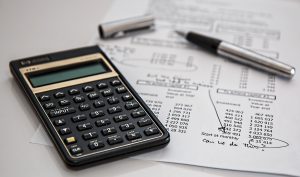Does your company lease equipment? If so, you need to be aware of major changes related to the accounting of your leases.
The Financial Accounting Standards Board (FASB) released its long-awaited changes in lease accounting standards last month, ending one of the biggest collaboration projects ever between it and the International Accounting Standards Board. Under the new guidance, companies will have to report most leases on their balance sheets and cease the off-balance-sheet reporting of assets and liabilities related to operating leases. All companies and organizations that lease assets -- such as real estate, vehicles, and manufacturing equipment -- will be affected.
What are the new financial reporting requirements? And what’s a lessee?
The update requires that organizations that lease assets – or lessees – recognize assets and liabilities on their balance sheets for leases with lease terms of more than 12 months.
Previously, the recognition, measurement, and presentation of expenses and cash flows arising from a lease primarily depended on its classification as a finance (capital) lease or operating lease. Now, in a huge change of practice, there will be no distinction. Companies must include both types of leases on their books.
For finance leases, lessees will be required to:
- Recognize a right-of-use asset and a lease liability, initially measured at the present value of the lease payment, in the statement of financial position.
- Recognize interest on the lease liability separately from amortization of the right-of-use asset in the statement of comprehensive income.
- Classify repayments of the principal portion of the lease liability within financing activities and payments of interest on the lease liability and variable lease payments within operating activities in the statement of cash flows.
For operating leases, lessees will be required to:
- Recognize a right-of-use asset and a lease liability, initially measured at the present value of the lease payment, in the statement of financial position.
- Recognize a single lease cost, calculated so that the cost of the lease is allocated over the lease term on a generally straight-line basis.
- Classify all cash payments within operating activities in the statement of cash flows.
The update also will require disclosures to help investors and other financial statement users better understand the amount, timing, and uncertainty of cash flows arising from leases. These disclosures include qualitative and quantitative requirements, providing additional information about the amounts recorded in the financial statements.
When do the changes take effect?
Nonpublic companies will be required to apply the new leasing standard for fiscal years beginning after Dec. 15, 2019, and interim periods within fiscal years beginning after Dec. 15, 2020. For nonpublic calendar year-end companies, this means an adoption date of Jan. 1, 2020, and retroactive application to previously issued annual financial statements for 2019 and 2018. Public companies will be required to adopt the new standard for fiscal years, and interim periods within those fiscal years, beginning after Dec. 15, 2018. For calendar year-end public companies, this means an adoption date of Jan. 1, 2019, and retroactive application to previously issued annual and interim financial statements for 2018 and 2017. Early application will be permitted for all organizations.
Why did this happen?
The new guidance responds to requests from investors and other financial statement users for a more faithful representation of leasing activities. In short, the update will provide investors with more transparent, comparable information about lease obligations held by companies and organizations they support.
How can I prepare my business?
Though the effective date might seem far off, you should not delay in preparing for the new lease accounting requirements now, especially if you have a large portfolio of leases. Though the accounting is not all that complicated, the collection and management of data will require a level of attention and coordination not previously seen in your business. Think of this a time-intensive, data management problem and set up internal structures to support it. Software is available to help.
Beyond the initial data collection, this change will also, for many companies, require constant monitoring of debt-to-capital ratios and related debt covenants. Prepare to monitor those issues as well.
This all sounds like a hassle. Should I still be leasing equipment?
The many reasons to lease equipment -- maintaining cash flow, preserving capital, obtaining flexible financial solutions, avoiding obsolescence (a notable reduction in the utility of an inventory item or fixed asset, resulting in a write-down to reflect its reduced value) -- remain unchanged. While you may want to more critically analyze lease-versus-buy decisions, and perhaps negotiate different terms and conditions in lease agreements to manage the impact of the new rules, you shouldn’t scratch all leases simply because accounting for them now takes more time. In many cases, the good still outweighs the bad.
Talk with your accountant now about the specific ways your business will be affected by this update and how you can prepare for the change. As always, we’re here to help.





